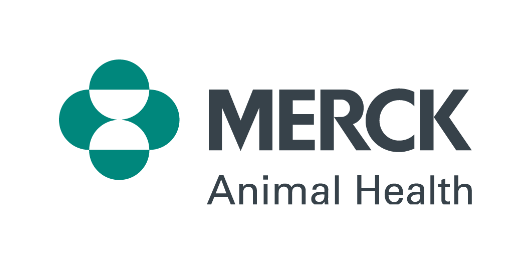Merck Animal Health Presents Data at 10th International Sea Lice Conference Showing Benefits of Treating Salmon Sequentially with SLICE® (emamectin benzoate) and Hydrogen Peroxide
Sequential Treatment Showed Efficacy Against Sea Lice Infections and Reduced Re-Infection After 39 Days
SUMMIT, NEW JERSEY, September 25, 2014 – Merck Animal Health (known as MSD Animal Health outside the USA and Canada) recently presented results from a study assessing the benefits of treating salmon with SLICE® (emamectin benzoate) followed by hydrogen peroxide to reduce sea lice infestations and re-infection in sea lice populations that have demonstrated resistance to emamectin benzoate. The study found that a sequential treatment approach provided effective clearance of existing sea lice infections and subsequently reduced resettlement of an emamectin benzoate-resistant sea lice strain, more effectively than treatment with hydrogen peroxide alone. Results were presented at the 10th International Sea Lice Conference being held August 31 to September 5 in Portland, Maine, U.S.A.
“Sequential treatment with SLICE and hydrogen peroxide has been adopted by a number of veterinarians and producers to improve sea lice control, particularly in sea lice populations that have shown resistance to the treatments,” said Dafydd Morris, Merck Animal Health. “We are pleased to present this important research to help producers optimize their sequential treatment approach, thereby improving the effectiveness of their control strategy and reducing re-infection.”
In the study, mixed-sex Atlantic salmon were challenged with infective sea lice copepodids from a population that is resistant to emamectin benzoate. After four weeks, the fish were randomly allocated to 28 identical treatment tanks. On Day 36, the fish were challenged with a second cohort of sea lice copepodids to ensure a mixed-stage sea lice population on the fish.
The 28 treatment tanks were randomly assigned to 14 treatment groups, with ten groups receiving treatment with SLICE from days zero to six. Nine of these groups were also treated with hydrogen peroxide at nominal concentrations of 600, 1000, or 1400ppm, administered at either three, seven, or 12 days after the end of the SLICE treatment. The other four groups did not receive a SLICE treatment. Of these, three groups received hydrogen peroxide treatments at 1400ppm and one received no treatments.
The study found that efficacy against sea lice infection was greater when hydrogen peroxide was administered seven or 12 days after SLICE in a concentration of 1000 or 1400ppm. Sequential treatment of hydrogen peroxide seven days after SLICE had 86.1 percent efficacy at 1000ppm and 81.8 percent efficacy at 1400ppm. When hydrogen peroxide was administered 12 days after treatment, efficacy was 83 percent at 1000ppm and 91.2 percent at 1400ppm. Efficacy of hydrogen peroxide at 1400ppm—without a preceding treatment with SLICE—was similar, at 86 percent when administered on day seven and 86.6 percent when administered on day 12. Treatment groups receiving only SLICE experienced limited reduction of infestation, due to resistance in the sea lice population.
In addition to determining the most efficacious timing and dosing of hydrogen peroxide after treatment with SLICE, the study also sought to determine the residual effect of SLICE and hydrogen peroxide in reducing re-infection by a resistant strain of sea lice. The study found that treatment with hydrogen peroxide alone gave little or no benefit against sea lice re-infection, and that sequential treatment showed similar efficacy to treatment with SLICE alone, suggesting that hydrogen peroxide has no residual efficacy. Treatment with SLICE, however, provided 52.9 percent efficacy against re-infection 39 days following treatment.
About Merck Animal Health
Today’s Merck is a global healthcare leader working to help the world be well. Merck Animal Health, known as MSD Animal Health outside the United States and Canada, is the global animal health business unit of Merck. Through its commitment to the Science of Healthier Animals™, Merck Animal Health offers veterinarians, farmers, pet owners and governments one of the widest range of veterinary pharmaceuticals, vaccines and health management solutions and services. Merck Animal Health is dedicated to preserving and improving the health, well-being and performance of animals. It invests extensively in dynamic and comprehensive R&D resources and a modern, global supply chain. Merck Animal Health is present in more than 50 countries, while its products are available in some 150 markets. For more information, visit www.merck-animal-health.com or connect with us on LinkedIn and Twitter at @MerckAH.
Merck Forward-Looking Statement
This news release includes “forward-looking statements” within the meaning of the safe harbor provisions of the United States Private Securities Litigation Reform Act of 1995. These statements are based upon the current beliefs and expectations of Merck’s management and are subject to significant risks and uncertainties. There can be no guarantees with respect to pipeline products that the products will receive the necessary regulatory approvals or that they will prove to be commercially successful. If underlying assumptions prove inaccurate or risks or uncertainties materialize, actual results may differ materially from those set forth in the forward-looking statements.
Risks and uncertainties include but are not limited to, general industry conditions and competition; general economic factors, including interest rate and currency exchange rate fluctuations; the impact of pharmaceutical industry regulation and health care legislation in the United States and internationally; global trends toward health care cost containment; technological advances, new products and patents attained by competitors; challenges inherent in new product development, including obtaining regulatory approval; Merck’s ability to accurately predict future market conditions; manufacturing difficulties or delays; financial instability of international economies and sovereign risk; dependence on the effectiveness of Merck patents and other protections for innovative products; and the exposure to litigation, including patent litigation, and/or regulatory actions.
Merck undertakes no obligation to publicly update any forward-looking statement, whether as a result of new information, future events or otherwise. Additional factors that could cause results to differ materially from those described in the forward-looking statements can be found in Merck’s 2013 Annual Report on Form 10-K and the company’s other filings with the Securities and Exchange Commission (SEC) available at the SEC’s Internet site (www.sec.gov).
